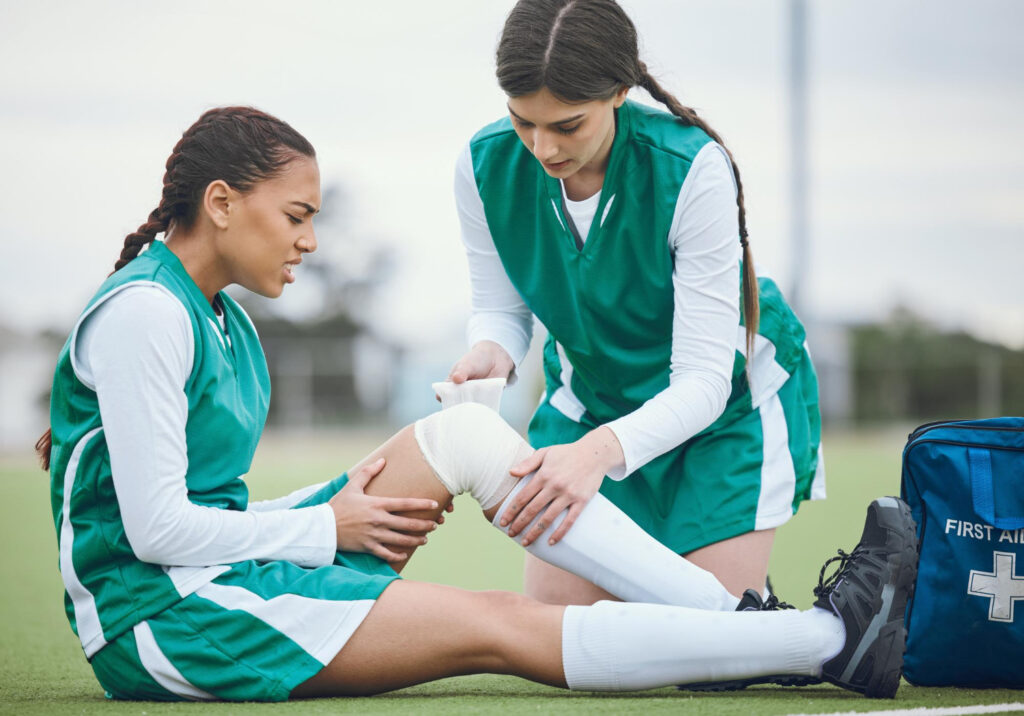Everything You Need to Know About ACL Injuries

Everything You Need to Know About ACL Injuries Facebook Twitter Youtube Instagram Not just athletes, but anyone can suffer from Anterior Cruciate Ligament (ACL) injuries. So, what exactly happens when this ligament gets injured? How does it tear, and how can you tell if that’s what you’re dealing with? We’ll break down how ACL injuries happen, what symptoms to watch for, and answer some of the most common questions we hear. What is an ACL injury? An ACL injury results from an ACL tear in your knee. It is one of your knee ligaments and connects your thigh bone (femur) to your shin bone (tibia). An ACL forms an “X” shape inside your knee with your posterior cruciate ligament (PCL). While an ACL is closer to the front of the knee, a PCL is closer to the back of it. Imagine ACL is like a strap that connects your bones and prevents your knee from bending or rotating too much. An ACL injury happens because of sudden high intensity force to the knee that bends or twists it farther than its natural limit. Types of ACL Knee Injuries Grade 1: The injury stretched your ACL enough to damage it, but it’s still in one piece and holding your knee bones together. Grade 2: The injury stretched your ACL so much that it was partially torn and loosened. Grade 3: A complete tear of your ACL is in two pieces. What are ACL Injury Symptoms? Common signs of an ACL injury include: A popping sound or sensation in the knee Swelling shortly after the injury Pain, especially when putting weight on the knee Feeling of instability or the knee “giving out” Reduced range of motion in the knee What Causes ACL Tears? ACL tears occur when excessive force or unnatural movement strains the knee beyond its limits. This often happens when the knee twists or shifts too suddenly. Typical causes of ACL Injury include: Sports injuries Car accidents Slips and falls Who is at Risk for ACL tears? ACL injuries can affect anyone, but they’re most common among athletes, especially those in sports with quick stops, twists, and direction changes, such as: Soccer Football Basketball Gymnastics Lacrosse What to Expect During Your Doctor’s Visit for an ACL Injury Your first appointment typically starts with a detailed conversation. Your doctor will ask about your symptoms, how the injury happened, and your medical history to get the full picture. Then comes a hands-on exam, where your doctor will carefully check your injured knee, comparing it to the other side. Most ligament injuries, including ACL tears, can be identified just through this thorough physical examination. Imaging That Might Be Used To confirm what’s going on or rule out other issues, your doctor might suggest: X-rays – While they can’t show ligament damage, X-rays help spot any related bone injuries. MRI scans – These give a clearer look at soft tissues, including your ACL, meniscus, and cartilage. MRIs aren’t always necessary to diagnose a tear, but they can be useful to see if anything else in the knee is affected. What are the Treatment Options for an ACL tear? Treatment depends on your lifestyle, activity level, and overall health. Active individuals and athletes, especially those in agility-based sports, often need surgical reconstruction to restore stability and safely return to competition. Less active or older adults may recover with non-surgical treatment, such as physical therapy and lifestyle adjustments, especially if their daily activities don’t require intense knee movement. There are two main approaches to ACL Injury Treatment: repair and reconstruction. ACL Repair This is a less common option and only suitable for very specific cases, typically when the ligament has cleanly torn off from the bone. It’s mostly used in acute injuries and select patients. ACL Reconstruction This is the gold standard for most people. It involves replacing the torn ligament with a graft, which could be: Autograft – using your own tendon (usually patellar, hamstring, or quadriceps tendon) Allograft – using donor tissue (more common in older or less active patients) Who Should Think About ACL Reconstruction Surgery? If you’re an active adult, playing sports that involve quick moves, twists, or heavy lifting at work, ACL surgery might be a smart option. Even older adults can benefit from surgery if they stay physically active. For kids and teens, surgery needs extra care. Their bones are still growing, so doctors weigh the risk of growth problems. But research shows that delaying treatment can lead to more damage inside the knee, like tears in the meniscus or cartilage. If your knee feels unstable and keeps giving way, you may be at risk of injuring other parts of your knee, making surgery a stronger recommendation. Sometimes, ACL injuries happen alongside other knee damage, like: Meniscus tears Cartilage damage Ligament sprains (like MCL) This combo, especially common in sports like football and skiing, is called the “unhappy triad.” In these cases, surgery often helps everything heal better, especially if meniscus repair is done at the same time. Rehabilitation After ACL Surgery Physical therapy plays a critical role in recovering from ACL surgery, often starting right after the procedure. The key to a strong recovery lies in your commitment to rehab. Thanks to modern surgical methods and secure graft fixation, recovery is now faster and more focused than it used to be. The First Few Days Post-Surgery During the first 7 to 10 days, your priority is to: Keep the surgical site clean and dry Begin gentle exercises to straighten the knee and activate the quadriceps Icing your knee regularly helps ease pain and swelling. Your surgeon might recommend a brace or a passive motion machine to help you bend and extend your knee, though studies show the machine isn’t essential for a good outcome. Whether you use crutches and how much weight you put on your leg will depend on your surgeon’s advice and whether other injuries were treated during surgery. What Rehab For ACL Injury Aims to

